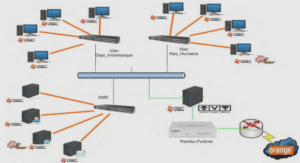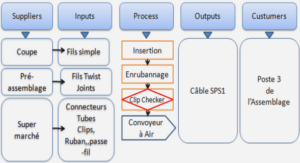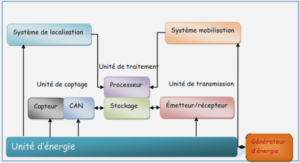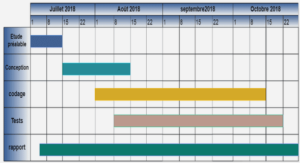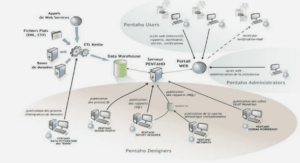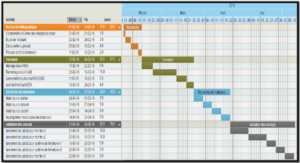FLAT HYDROPHOBIC SURFACES
ABSTRACT
Ice and wet-snow accretion on outdoor structures, including power transmission and distribution equipment, is a serious problem for regions experiencing icing conditions. Various de-icing and anti-icing techniques have been developed to date to counter this problem. Most of the techniques currently in use, however, including active de-icing methods, are employed only where accumulations are substantial. Passive approaches to the problem such as anti-icing or icephobic coatings which inhibit or retard ice accumulation on the surfaces are gaining in popularity.
Metal corrosion should also be taken into account since metal or metallic alloys are subject to corrosion problems when placed in a humid or aggressive environment; the development of any ice-releasing coatings on Al structures, as they must be durable enough, is thus closely related to anti-corrosive protection of that specific metal.
ACKNOWLEDGEMENTS
To start with, I am thankful to almighty providence, God, who lends me life, the faith and for all mercies he has blessed me with.. .specially my charming spouse…. I am most grateful for having the opportunity to continue my education in the Master’s research program offered by UQAC. This research was carried out within the framework of the NSERC/Hydro-Quebec/UQAC Industrial Chair on Atmospheric Icing of Power Network Equipment (CIGELE) and the Canada Research Chair on Engineering of Power Network Atmospheric Icing (INGIVRE) at the University of Quebec at Chicoutimi (UQAC). Academically, this work has been supervised and completed under the auspicious guidance of Prof. Masoud Fananeh, the Chairholder of the CIGELE and the INGIVRE. It has been a signal honor for me to work with him throughout the duration of this research project; I would like to thank him for his patience, supervision, and support. Special thanks also go to Dr. Sergei Kulinich as my co-director for his insight, understanding, and valuable advice. His knowledge of the literature in this domain and his field experience was also a great advantage to proceeding of this work. I would like to express my sincere appreciation to both of them. I am grateful to Mrs. Hélène Grégoire, Center for Aluminium Technology in Chicoutimi (ATC), and Dr
Description of the Icing Problem
Ice accumulation on exposed surfaces may lead to severe damage and consequences involving the interrupted operation or integrity of outdoor civilian, industrial or military structures, transmission line cables, naval craft, fishing vessels and ice breakers in cold climate countries subjected to extreme weather conditions. Atmospheric icing occurs when the surfaces of exposed structures come into contact with supercooled water droplets or snow particles. Each year, numerous failures due to ice or snow accumulation are reported from Canada, the United States, Russia, Iceland, Japan and Norway. Therefore, various de-icing and anti-icing techniques have been developing for several decades [3]. In the specific case of power transmission lines, ice or wet snow can cause serious damages due to their high adherence to both metallic and insulator surfaces resulting in cable sagging and short circuits which are caused by static ice overloads on towers and cables
|
Table des matières
ABSTRACT
RÉSUMÉ
ACKNOWLEDGEMENTS
TABLE OF CONTENTS
LIST OF FIGURES
LIST OF TABLES
GLOSSARY OF NOTATIONS
CHAPTER 1 INTRODUCTION
1.1 BACKGROUND
1.2 DESCRIPTION OF THE ICING PROBLEM
1.3 CURRENT SOLUTIONS
l .4 PRINCIPAL OBJECTIVES OF THE RESEARCH
1.5 METHODOLOGY
1.5.1 Coating Preparation
1.5.2 Characterization Methods
1.6 ORIGINALITY AND SIGNIFICANCE OF RESEARCH
1.7 OVERVIEW OF THE THESIS
CHAPTER 2 REVIEW OF THE LITERATURE
2.1 INTRODUCTION
2.2 ICING IN NATURE AND THE 1998 ICE STORM
2.3 DIFFERENT TYPES OF ATMOSPHERIC ICE IN NATURE (GENERIC DEFINITIONS AND
METEOROLOGICAL CONDITIONS)
2.4 SURFACE ICE-REPELLENCY
2.5 ADHESION FORCES AND THE INTERFACE
2.5.1 Ice Adhesion Testing
2.5.2 Lowering Ice Adhesion
2.6 BRIEF REVIEW OF HYDROPHOBIC PROPERTIES
2.6.1 Wetting, Roughness and Air
2.6.2 Hydrophobicity and Contact Angle
2.6.3 Methods of Measuring the Contact Angle of Surfaces
2.6.4 Other Measurements on Contact Angle Hysteresis
2.6.5 Critical Surface Tension (yc)
2.7 DEFINITION OF SURFACE PASSIVATION
2.8 BRIEF REVIEW OF SUPERHYDROPHOBIC PROPERTIES
2.8.1 Waterproofing in Nature
2.8.2 Superhydrophobic Surfaces
2.8.3 Fabricating Rough Surfaces via Chemical-Physical Methods
2.8.4 Self-Assembled Monolayer of Organosilanes
2.8.5 Self-Assembled Monolayer of Fatty Acids
2.8.6 Low-Surface-Energy Modification of Rough Surfaces
CHAPTER 3 ALUMINIUM ALALLOYS AND THEIR CORROSION
3.1 ALUMINIUM AND ALUMINIUM ALLOYS
3.2 CORROSION OF AL ALLOYS AND LOCAL DISSOLUTION PHENOMENA
3.2.1 Historical Introduction
3.2.2 Types of Corrosion on Aluminium Alloys
3.3 ANTICORROSIVE ACTION VIA LONG ALIPHATIC CHAIN SILANES
3.4 ALKANOIC ACID LAYERS ON AL2O3 SURFACES
3.5 CHROMATE AND PERMANGANATE CONVERSION COATINGS
CHAPTER 4 EXPERIMENTAL FACILITIES AND TEST PROCEDURES
4.1 INTRODUCTION
4.2 EXPERIMENTAL PROCEDURES
4.2.1 Sample Pre-Treatment (Polishing and Cleaning Protocol)
4.2.2 Deposition Baths
4.2.3 Other Passivation Baths Used
4.3 SURFACE ANALYSIS TOOLS
4.3.1 Morphological Analyses
4.3.2 Wettability Tests
CHAPTER 5 EXPERIMENTAL RESULTS AND DISCUSSION: INVESTIGATION OF
HYDROPHOBICITY AND STABILITY CARRIED OUT ON FLAT ALUMINIUM ALLOY SURFACES
5.1 INTRODUCTION
5.2 ONE LAYER APPROACH
5.2.1 Stearic Acid (SA) Based Coating on Flat Al Surfaces
5.2.1.1 Study of Sample Hydrophobic Properties
5.2.1.2 Influence of Sample Immersion in Water on CA Values (Stability Test)
5.2.1.3 Scanning Electron Microscopy and Optical Microscopy Images
5.2.2 Octadecyltrimethoxysilane (ODTMS) Based Layers on Flat Al Sufaces
5.2.2.1 Stability of Samples Immersed in Water
5.2.2.2 Effect of Sonication on Sample Hydrophobicity
5.2.2.3 Effects of Solvent, Alkaline Cleaning and Curing on Sample Hydrophobicity
5.3 Two LAYER APPROACH
5.3.1 Potassium Permanganate Conversion Coating (Pre-Treatment) Grafted with ODTMS (PostTreatment)
5.3.1.1 Introduction
5.3.1.2 Surface Hydrophobicity of Al Substrates Coated with KMnOyODTMS
5.3.1.3 Stability of Al Samples Coated with KMnOVODTMS under Deionized Water through
CA Measurements
5.3.1.4 Effects of Solvent on Surface Hydrophobicity and Durability
5.3.1.5 Surface Analysis: Corrosion Observation via Images from Scanning Electron Microscopy.
5.3.2 Coating of Al Alloy Surfaces Applying TEOS and BTSE (Pre- Treatment) Grafted with
ODTMS (Post-Treatment)
5.3.2.1 Introduction
5.3.2.2 Hydrophobicity of Aluminium Samples Coated with TEOS/ODTMS and BTSE/ODTMS
Layers
5.3.2.3 Stability of Prepared Coated Samples in Deionized and Tap Water over Time
5.3.2.4 Effects on Hydrophobicity of Sample Sonication and Annealing
5.3.2.4 Effects of pH and Solution Concentration on Prepared BTSE/ODTMS and TEOS/ODTMS
Coatings
5.3.2.5 Effects of Various Immersion Times in an ODTMS Solution on Prepared BTSE/ODTMS
and TEOS/ODTMS Coatings
5.3.2.6 Surface Characterization (Corrosion Observation)
CHAPTER 6 EXPERIMENTAL RESULTS AND DISCUSSION: INVESTIGATION OF
HYDROPHOBICITY AND STABILITY ON ROUGH ALUMINIUM ALLOY SURFACES
6.1 INTRODUCTION
6.2 COATING OF ETCHED AL SURFACES USING STEARIC ACID (SA)
6.2.1 Introduction
6.2.2 Hydrophobic Properties
6.2.3 Surface Characterization
6.3 COATING OF ETCHED AL SURFACES VIA FAS-13 AND FAS-17
6.3.1 Introduction
6.3.2 Hydrophobic Properties
6.3.3 Surface Characterization
CHAPTER 7 EXPERIMENTAL RESULTS AND DISCUSSION: ICE-RELEASING PERFORMANE OF
COATED ALUMINIUM ALLOY SURFACES
7.1 INTRODUCTION in
7.2 FLAT HYDROPHOBIC SURFACES
7.2.1 Shear Stress of Ice Detachment vs. Icing/De-icing Cycles for Flat Al Surfaces Coated with SA
andODTMS
7.2.2 Contact Angle as a Function of Icing/De-icing Cycles for Flat Al Samples Coated with ODTMS
and Stearic Acid
7.2.3 Shear Stress of Ice Detachment vs. Icing/De-icing Cycles for Flat Al Surface Coated with
BTSE/ODTMS and TEOS/ODTMS
7.2.4 Contact Angle as a Function of Icing/De-icing Cycles for Flat Al Samples Coated with
BTSE/ODTMS, TEOS/ODTMS
7.3 ROUGH SUPERHYDROPHOBIC AL SURFACES
7.3.1 Shear Stress of Ice Detachment vs. Icing/De-icing Cycles for Rough Superhydrophobic Al
Samples Coated with FAS-13, FAS-17 and SA
7.3.2 Contact Angle as a Function of Icing/De-icing Cycles for Rough Superhydrophobic Al Samples
Coated with FAS-13, FAS-17 and SA
7.4 CONCLUSIONS
CHAPTER 8 CONCLUSIONS AND RECOMMENDATIONS
8.1 CONCLUSIONS
8.2 RECOMMENDED WORKS
REFERENCES
![]() Télécharger le rapport complet
Télécharger le rapport complet

